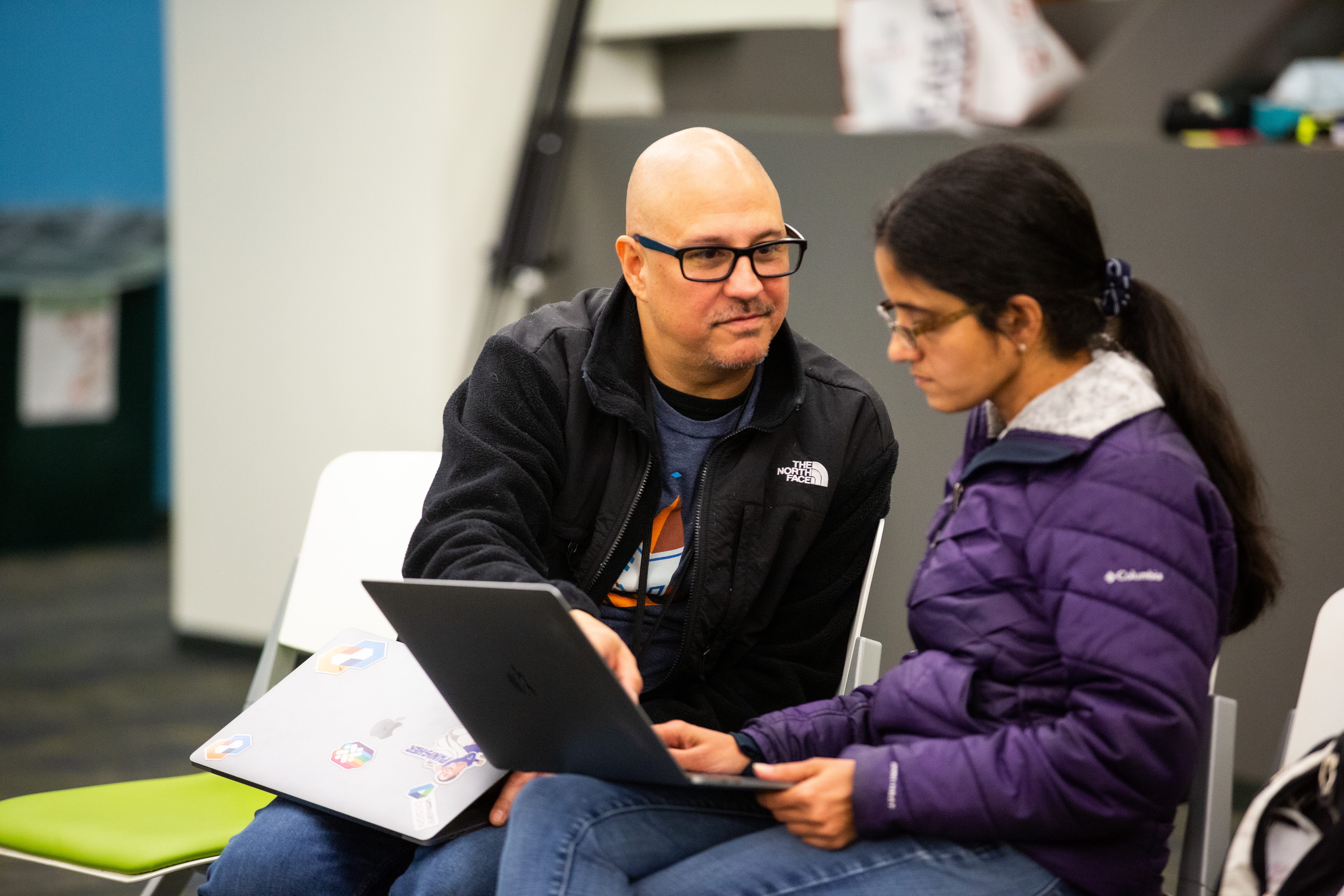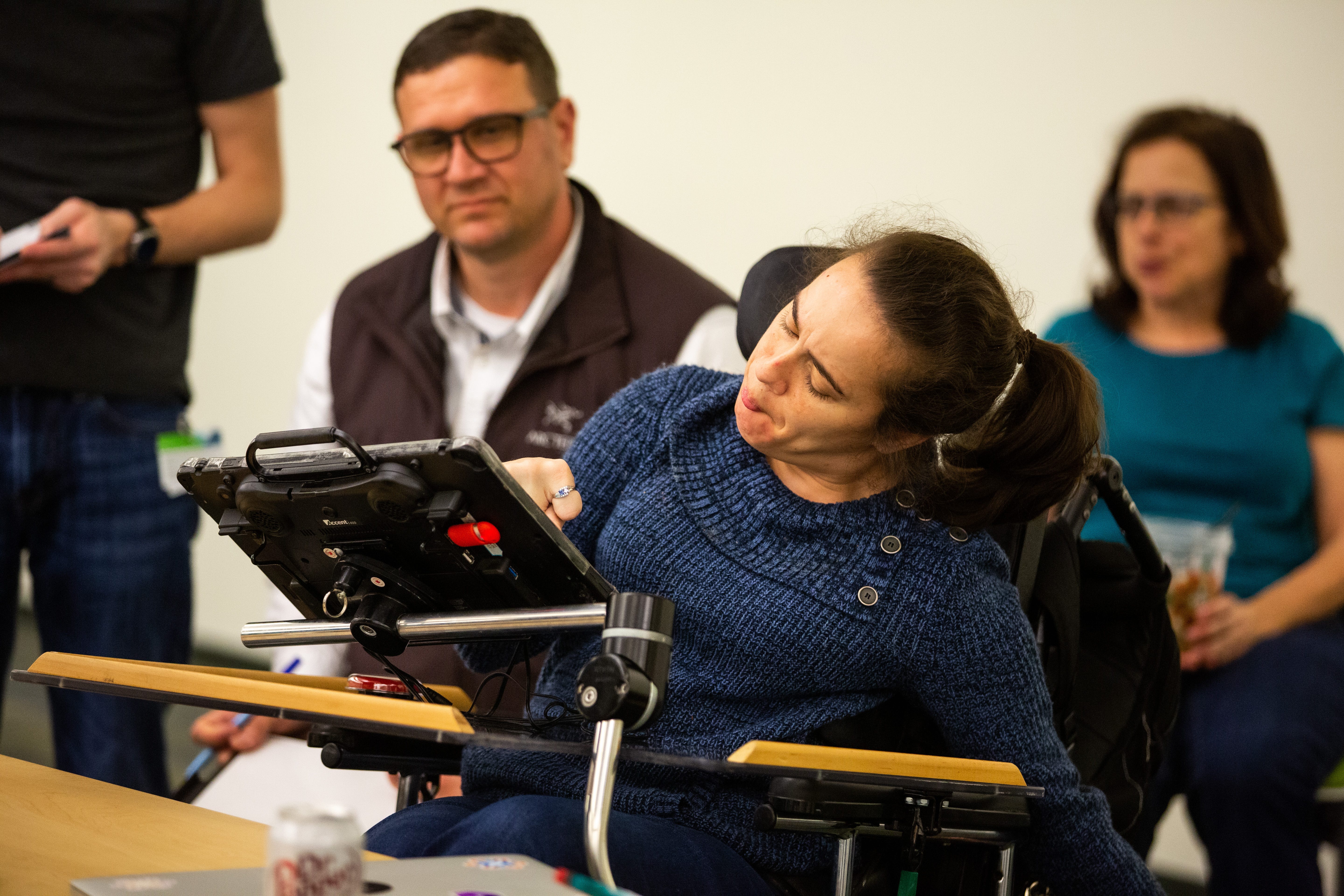
The first week in February marked VMware’s first accessibility week which consisted of an accessibility summit followed immediately by an accessibility hackathon.
The fact that VMware held a successful accessibility hackathon only a year after starting its accessibility program is something to be proud of. It shows how much progress we’ve made in growing accessibility focus at VMware and been able to spread the accessibility message across the entire organization. In addition to being the first VMware accessibility hackathon, this was the first time the majority of finalists were from outside of the traditional R&D organization. This is important because the majority of hackathon participants are typically coders.
What is an Accessibility Hackathon?
Hackathons bring together people with related interests to create tech solutions over the course of an event. In the spirit of inclusion for our diverse global population, VMware is increasingly holding virtual hackathons, which allows people from all over the world to collaborate and learn from each other in their problem solving activities. Any type of hackathon raises awareness for the issue being hacked, as well as new product ideas and enhances VMware’s #TechForGood and EPIC2 values.
Accessibility hackathons are a good way to introduce developers to the problems facing people with disabilities. They readily expose accessibility issues and increase awareness about the need for technologies to be designed and developed in an accessible manner. Assistive technology demonstrations by users with disabilities are guaranteed to create at least one “Aha!” moment at the hackathon where someone finally internalizes why accessibility is so vitally important.
Logistics
It takes a village to run a successful hackathon. VMware’s most recent hackathon was a cooperative effort involving three different parts of the VMware organization:
- The VMware Office of the CTO who owns all VMware hackathons;
- The VMware accessibility and design teams, and;
- The VMware disability employee resource group.
Other contributions came from different business units who contributed speakers and judges, facilities, catering, our audio/visual group as well as the participants themselves.
Recipe for an Accessibility Hackathon
The following is the “recipe” VMware followed for its accessibility hackathon.
T minus 5 months
Planning for the Accessibility Hackathon started five months before the proposed hackathon date. Early topics included:
- Deciding on prizes
- Choosing judges
- Booking facilities
- Ensuring the event itself would be accessible because we had presenters and participants with disabilities. This included CART (Communications Assisted Real-time Translation), wheelchair access, and supporting the needs of people with vision loss.
- Drafting, reviewing, and approving on-line communications (largely Slack and e-mail) related to the hackathon
- Creating an accessible registration form — we used MS Teams
Day 1: The Summit
We decided to take advantage of the traditional VMware schedule of Tuesday-Thursday for the actual hacking to have an accessibility summit on the Monday of Accessibility Week.
- The morning of the summit was intended for PMs and development managers to introduce them to why accessibility was so important legally, and also important to our customers and partners who delivered their message personally.
- The afternoon was dedicated to hackathon registrants and other developers interested in learning to code in an accessible manner.
Days 2–4: The Hack
More than half of the hackathon participants were outside of the VMware Palo Alto campus. Five different countries, six different business units, and nine different products in total were represented. The following ideas were submitted and developed during the hackathon:
- Walk assistant application for Blind/Low Vision (Amit Gupta Sidhant Tiwari, Allen Zhao)
- Open doors with the twist or tap of your smart phone (Philip Jang, Andrew Lee, Ujwal Naik, Cesar Carrera, Divyankitha Urs)
- Wise Eyes — photo identification and storage of contacts (Hamsa Rajaraman)
- Add features to Dasher text entry software (Jim Hawkins, Lorenzo Andres Blasa, Simon Brooks, Neil Broadbent, Philip Riscombe-Burton)
- Sahaaya — Context Sensitive Help (Ashok Prabhu Kevin Shah, Pratibha Shinde, Aswin Prabhu, Gaayathri Meenakshi Sundaram, Sireesha Kuppala)
- Alexa-based Voice User Interface (VUI) for Wavefront (Srinivas Kandula Vikram Raman, Anirban Dey, Gangadharaswamy H U, Sushant Jaiswal, Yogesh Prasad Kurmi, Baburaj Velayudhan)
- Using Eye-Tracking to Make eLearning Accessible (Philip Boyer Aniruddha Saklani, Binu Kurup, Philip Boyer, Siddharth Bhadani, Abhijeet Banerjee)
- Keyboard Accessible Column Resizing (Ali Itani, Vasil Atanasov)
- Intelligent Wheelchair Object Awareness (Anil Sharma, Aakash Sudersan, Uma Maheshwar Rao Bonagiri, Pooja Yadav, Neeraj Menon S)
- Making VMware Source Intranet Accessible (Mingda Tang, Navneet Rai, Aishwarya Nair, Payal Madaan, Liang Zhang, Carlos Leon)

Day 4 through Day 5: Demos and Judging
At the end of day 4, every team was required to give a demo and discuss their hack, the challenges, and what further they would like to accomplish if given more time. After the demo:
- First round of judging was done by accessibility subject matter experts late on Thursday. We had the amazingly difficult job of whittling the 15 amazing ideas down to four finalists.
- Second round of judging was done by VMware executives who weren’t allowed to participate in the first round of judging. They were charged with choosing the winner.

After the hack
Several of the ideas presented in the hack will be further developed at VMware. Some of the hacks will be worked on inside the most closely associated business unit, and others via xLabs, VMware’s experimental idea innovation group. The fact that we had such diverse participation means we can work on more ideas than just the winning idea.
Lessons Learned
Having an sponsor is imperative to a successful accessibility hack. Even people who know nothing about accessibility will show interest if they know their favorite executive cares about this topic.
Include individuals with disabilities in the hackathon teams. This gives participants the ability to learn first hand how people with disabilities use technology and allows them to provide input during the design process.
Pre-hack accessibility training is essential. Training was accomplished through the summit (Day 1 of Accessibility Week). You aren’t going to get accessible code from developers if they don’t know what ARIA is and how to use it, for example.
- We made sure the developers knew just enough about accessibility to be productive.
- We also provided the project teams with continuous feedback through access to users and mentors with disabilities.
By including training as part of the hack, we were able to advertise “no accessibility experience required” which in turn drove more diverse entries by eliminating “accessibility knowledge” as a barrier to entry.

Accessibility mentorship during the hack. Accessibility subject matter experts who can serve as mentors increases accessibility understanding by the participants and quality of the final submissions.
Slack channel for hack-related communications. Because everyone can’t be everywhere all the time in every timezone, and especially not on a campus as large as VMware’s Palo Alto headquarters.
Everyone can learn something at a disability hackathon and solutions that come up during hackathon benefit / can be used by everyone!
We’re hiring!
The VMware Design team is looking for talented designers, engineers, and leaders to help us continue transforming enterprise design with accessibility in mind. Check out our open positions!VMware Design

0 comments on “VMware’s First Accessibility Hackathon”